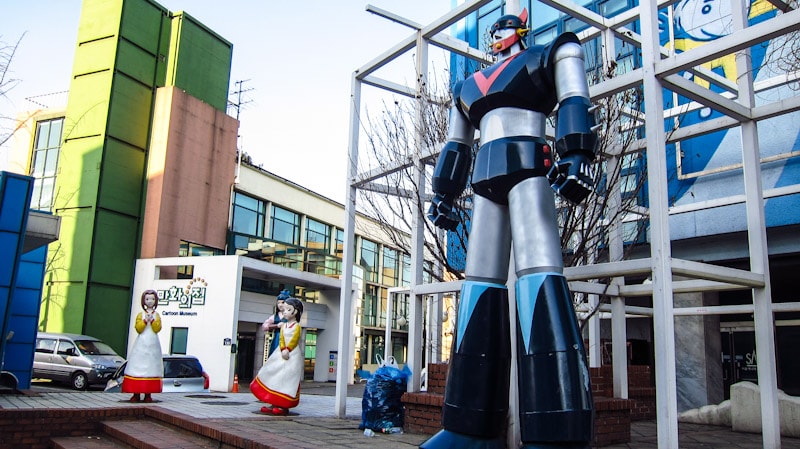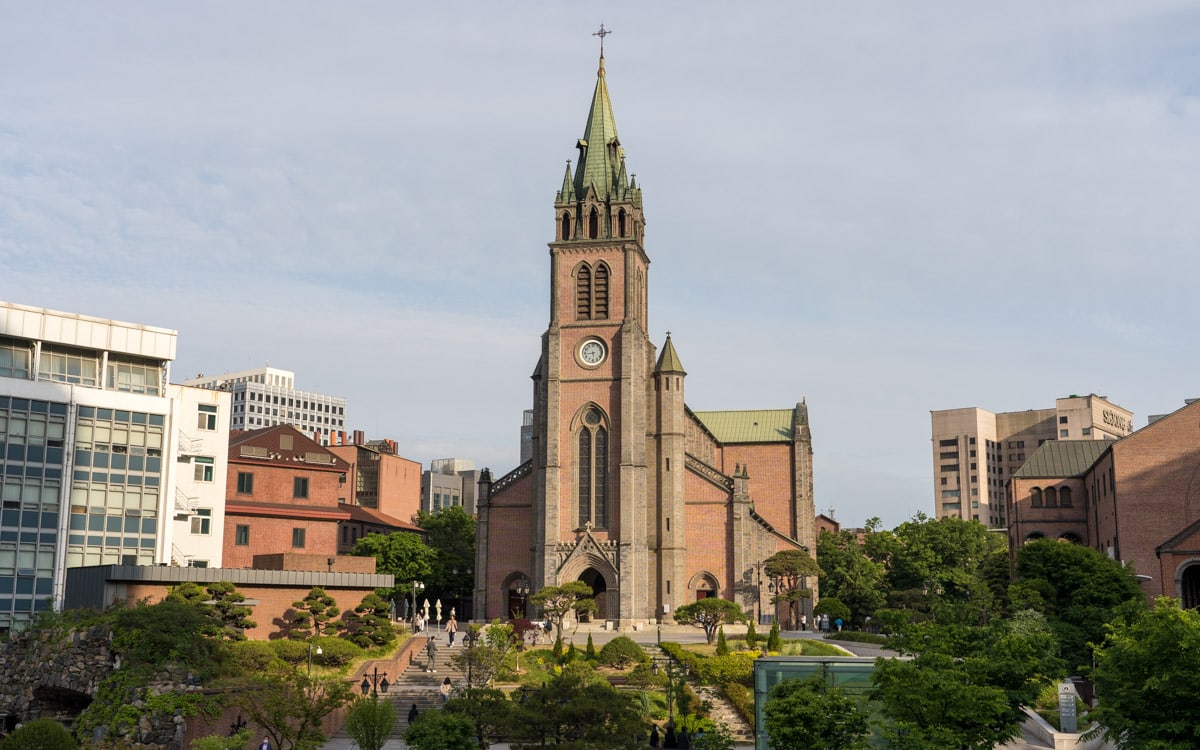
Myeongdong Cathedral was the first and most important Catholic church in Korea and is an important symbol of Christianity in the country. The church is an important icon of Korea and Myeongdong. The official name of Myeongdong Cathedral is Cathedral Church of the Virgin Mary of the Immaculate Conception.
The elegant cathedral was the first Gothic style church in Korea to be constructed of brick. The roof of the church is 23 meters (75 feet) tall while the bell tower is 45 meters (147 feet) tall. The floor plan of the church was designed around a Latin cross.
People started congregating at this location to express their faith starting in 1784. At the time, the location was known as Myeongnaebang.
In 1894, Chinese bricklayers began construction on a new and permanent church using red and grey bricks. King Gojong, the twenty sixth and final Joseon Dynasty king and first emperor of Korea, laid the first stone. Designed by French missionaries, the cathedral was built with a Gothic style.
Four years later, on May 29, 1898, construction was completed with Our Lady of the Immaculate Conception as the patron saint. Until the conclusion of World War II, the cathedral was known as Chong-Hyen. After the war, it was renamed to Myeongdong Cathedral.
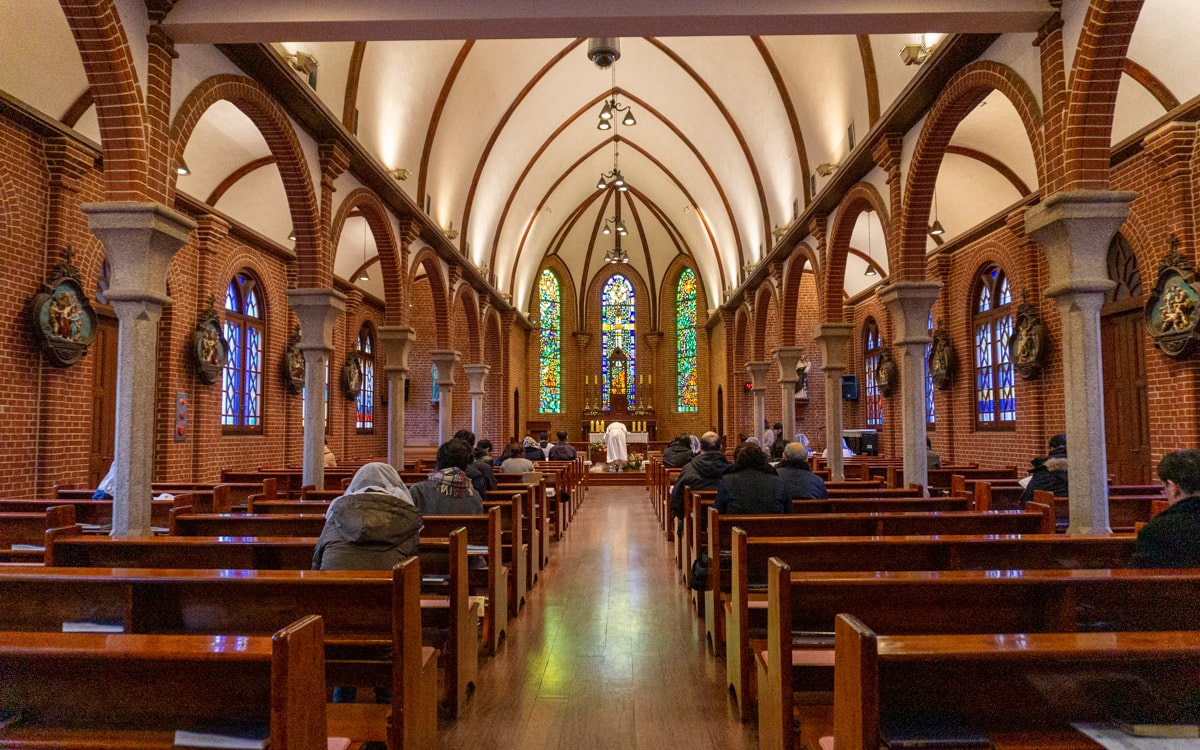
During the 1970s and 1980s, the church became an important location for human rights protests and also for the struggle for democracy in South Korea against the military government that came to power after the Korean War.
During the rule of dictator Park Chung-hee (1963–1979), the church was used as a refuge by political protesters. Police at the time refused to enter the church. Even to this day, the occasional fugitive may enter the church hoping for the same outcome.
A graveyard here is the final resting place of many Christian martyrs who lost their lives during purges in the 1860s.
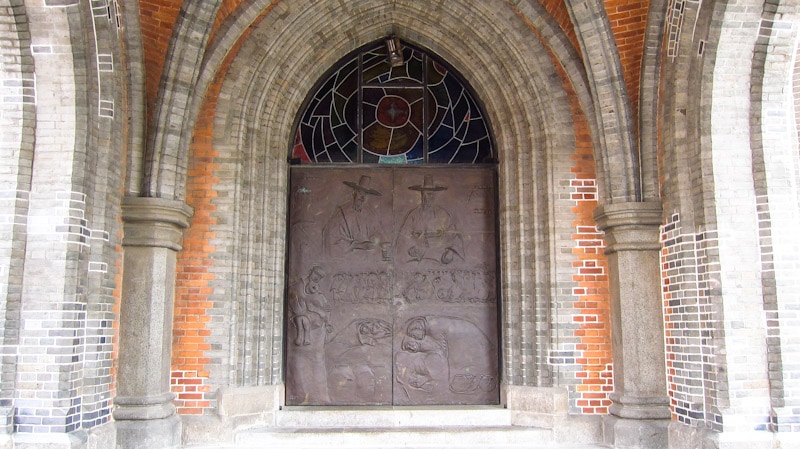
To truly appreciate the beauty of the building, enter the church and view the tall ceilings and stained glass windows. One of the best times to visit is when the organ is being played, usually around noon.
If you are looking for the Myeongdong Cathedral mass schedule, check out the Hours section listed below for information about masses. A highlight of the church is the Midnight Mass on Christmas Eve.
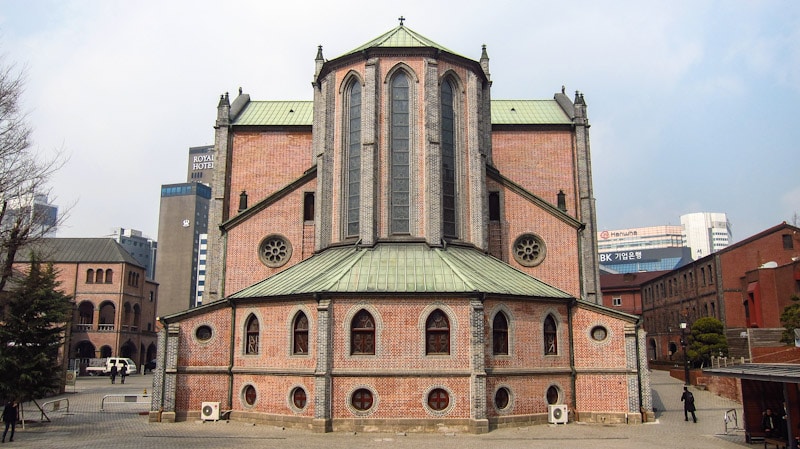
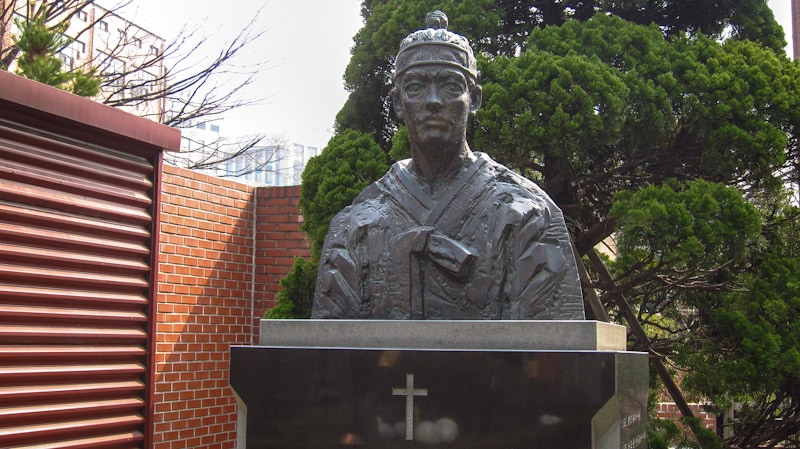
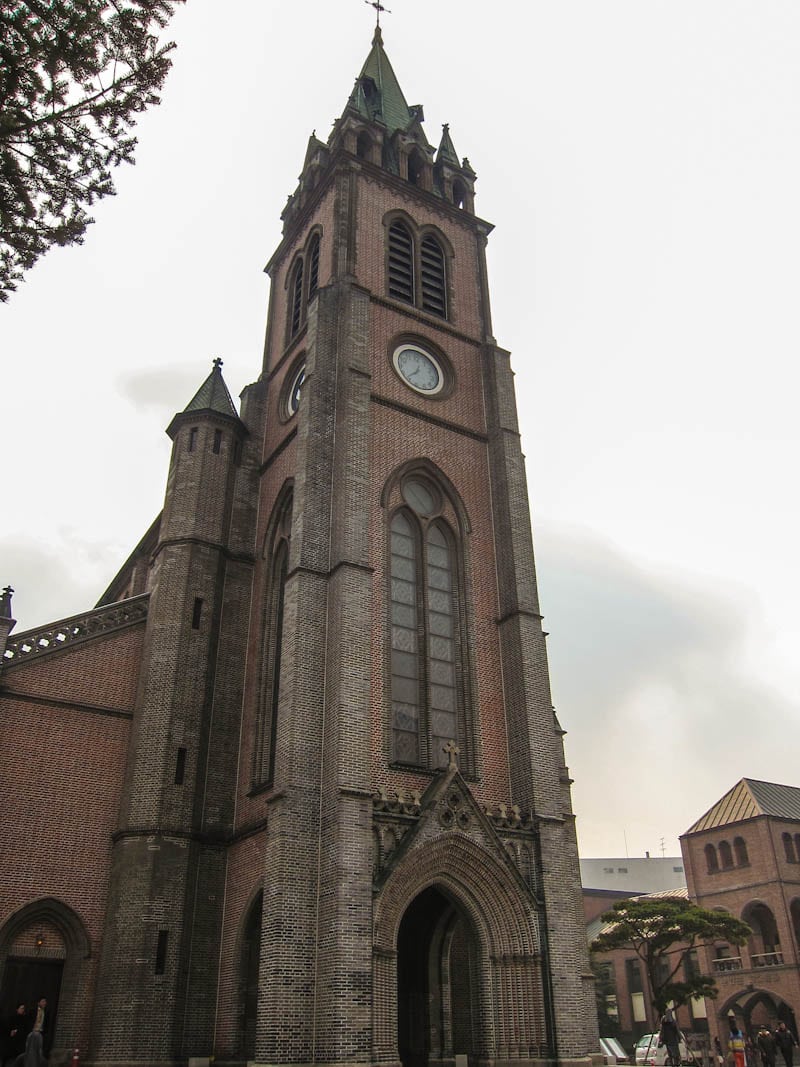
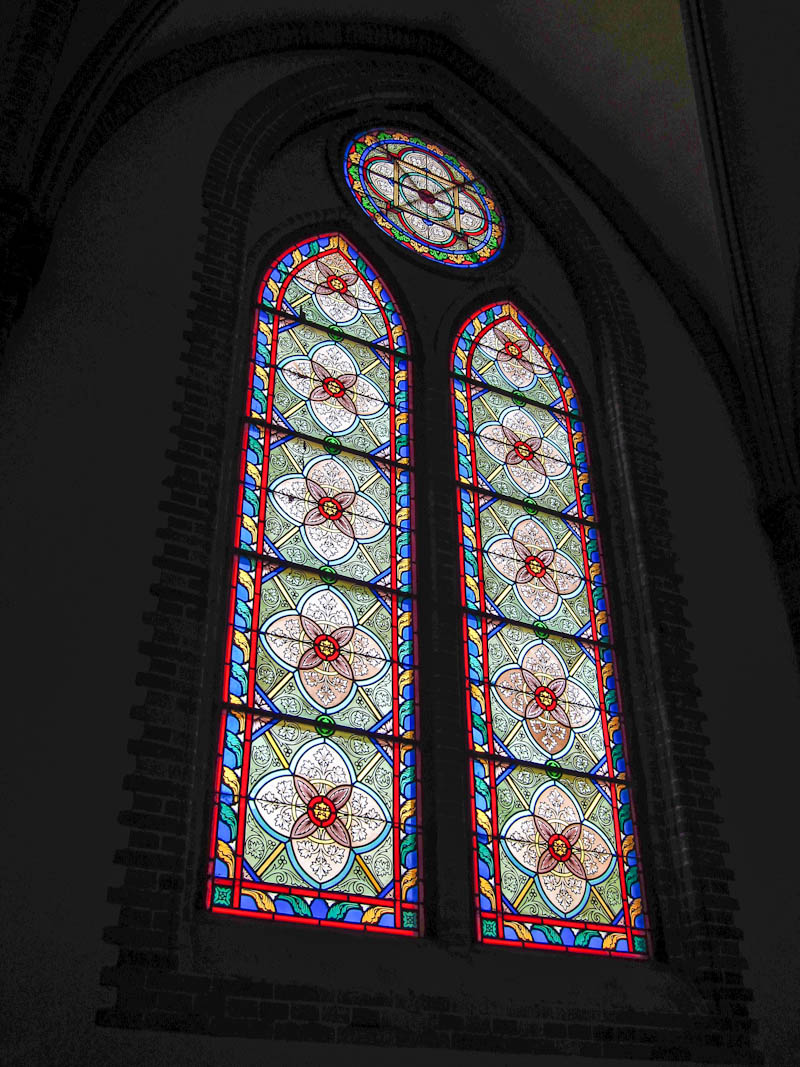
Myeongdong Cathedral Information
Hours
Daily: 9:00-21:00
Saturday Vigil Mass: 18:00, 19:00
Sunday Masses: 7:00, 9:00 (English), 10:00, 11:00, 12:00, 16:00, 17:00, 18:00, 19:00, 21:00
Weekday Masses: (except Monday): 6:30, 18:00, 19:00
Admission
Free
How to Get Here
Option 1
Take Subway Line 4 to Myeong-dong Station (Exit 6).
Turn left onto Myeongdong 8-gil and continue for 350 meters.
Turn right onto Myeongdong-gil and continue for 180 meters to reach the cathedral on your right.
Option 2
Take Subway Line 2 to Euljiro 3-ga Station (Exit 12).
From the exit, continue for 160 meters and turn left onto Samil-daero.
Continue for 170 meters and turn right onto Myeongdong-gil.
Continue for 100 meters to reach the cathedral on your left.
Myeongdong Cathedral Video

Map
Additional Resources
Viator by TripAdvisor
Viator is a popular online platform that helps travelers book tours, activities, and unique experiences worldwide, including in Seoul. It connects users with a wide selection of options – from sightseeing tours to cultural events and outdoor adventures – all offered by local providers.
Klook
Klook offers discounted tickets and reservations for various attractions and services in Seoul, from theme parks and museums to tours and transportation options.
Rakuten
Save money while exploring Seoul with Rakuten's cashback program. Book your hotels or other services through Rakuten and enjoy cashback rewards and exclusive deals.
If you sign up using the link below, you could earn $30 cashback on your first purchase over $30.
Book Recommendations
For an immersive guide to Seoul, many travelers choose to bring a book along. Fodor's Seoul, for example, offers detailed recommendations on sights, restaurants, maps, and travel tips.
Nearby Sights
Myeongdong
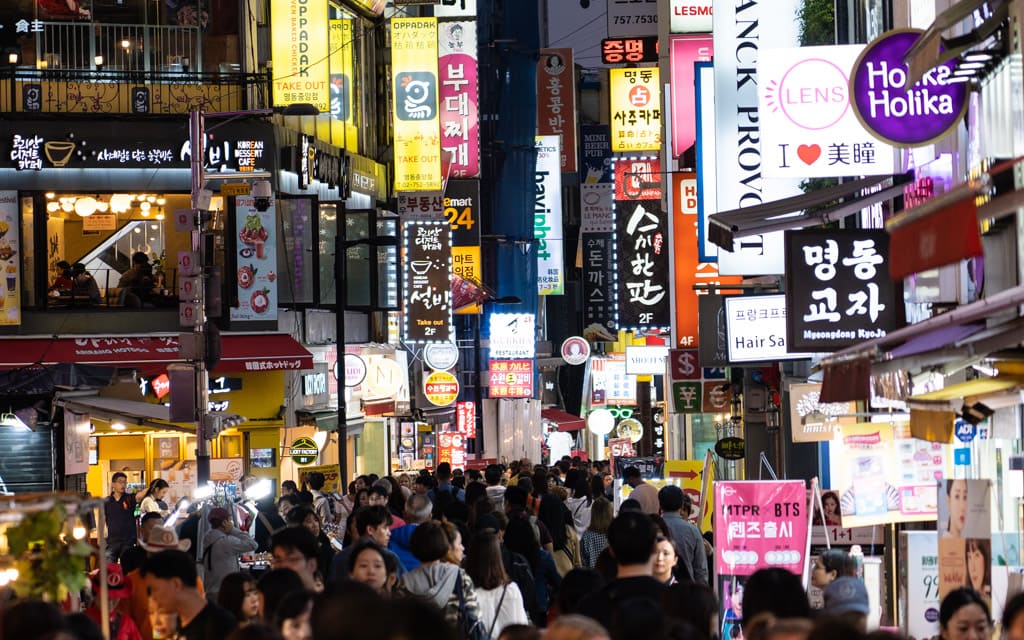
If you are looking for some of the best shopping and eating in Seoul, then start with Myeongdong. This popular district features street food carts, major shopping malls, and entertainment. The dense grid of streets found in this bustling neighborhood is packed with people at all hours of the day looking to enjoy some of the best shopping, street food, and nightlife in all of Korea.
Bank of Korea Museum
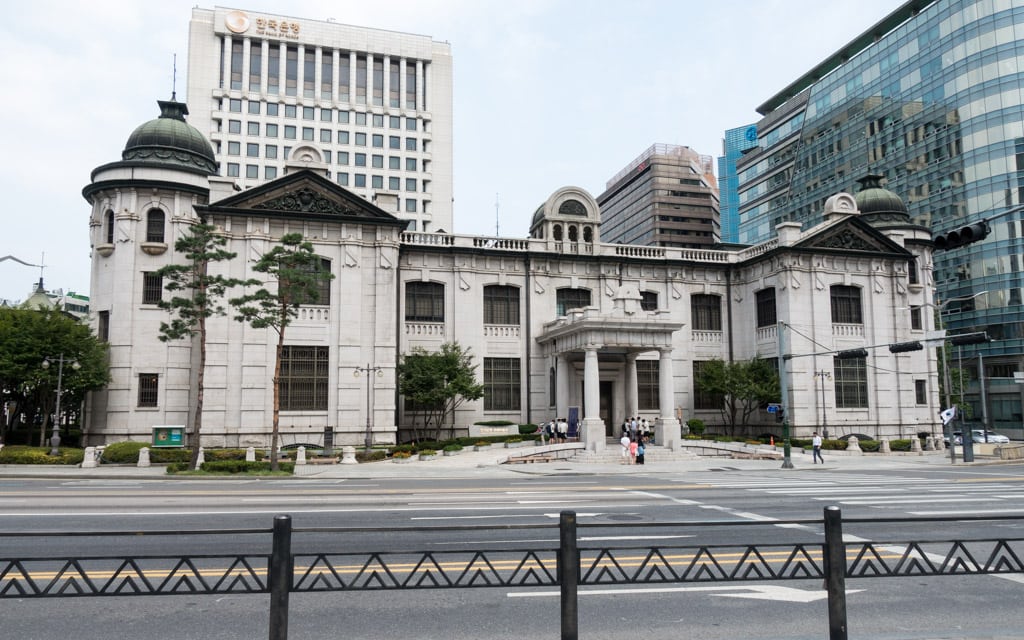
The Bank of Korea Museum displays various currencies from Korea and from around the world that date all the way back to ancient times up until present day. Construction on the building started in November, 1907 and was completed in January, 1912. The museum was designed by Japanese architect Tatsuno Kingo, who also designed Tokyo Station in Japan.
Hwangudan Altar (Wongudan Altar)
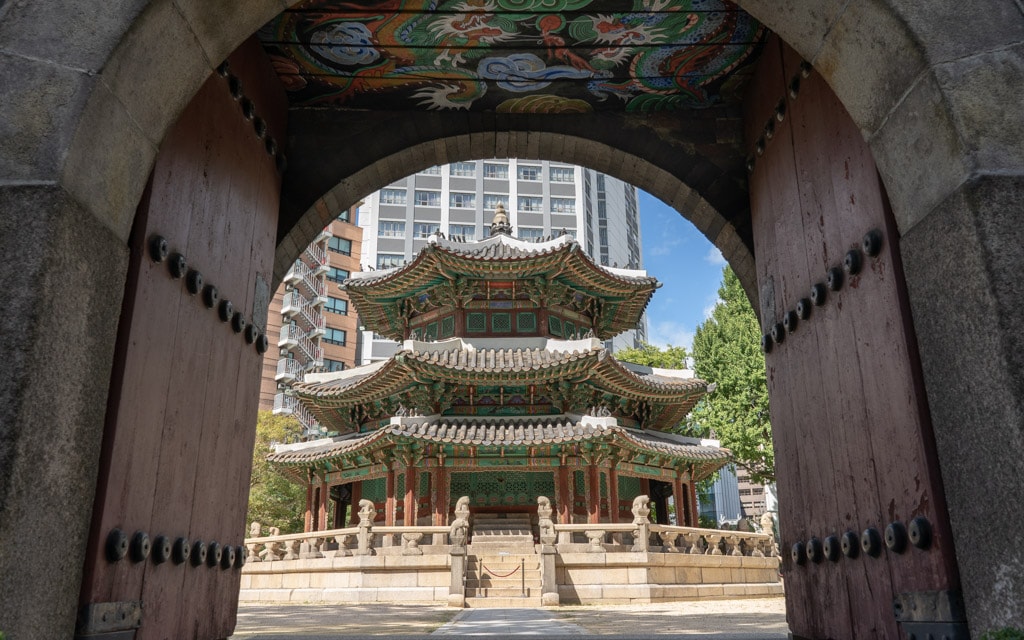
Wongudan Altar is where the emperor would perform sacrifices to heaven. The altar was built in 1897 and since then has been known as Hwangudan and Wondan. The complex was built during the reign of Emperor Gojong and was designed by Sim Uiseok, at the time, one of the best royal architects.
Bosingak Belfry
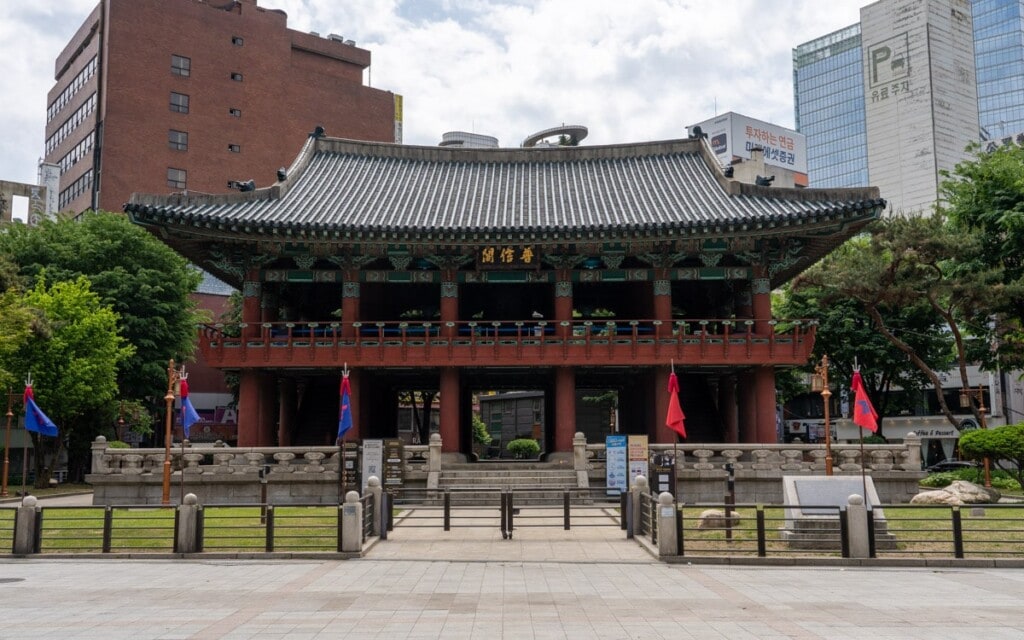
Located in the heart of Insadong is Bosingak Belfry. This historic bell pavilion, or bell tower, stands out in a sea of modern skyscrapers in the Jongno District. The Jongno District gets its name from Jongno, a major road which runs west to east through the heart of central Seoul.
Namsangol Hanok Village
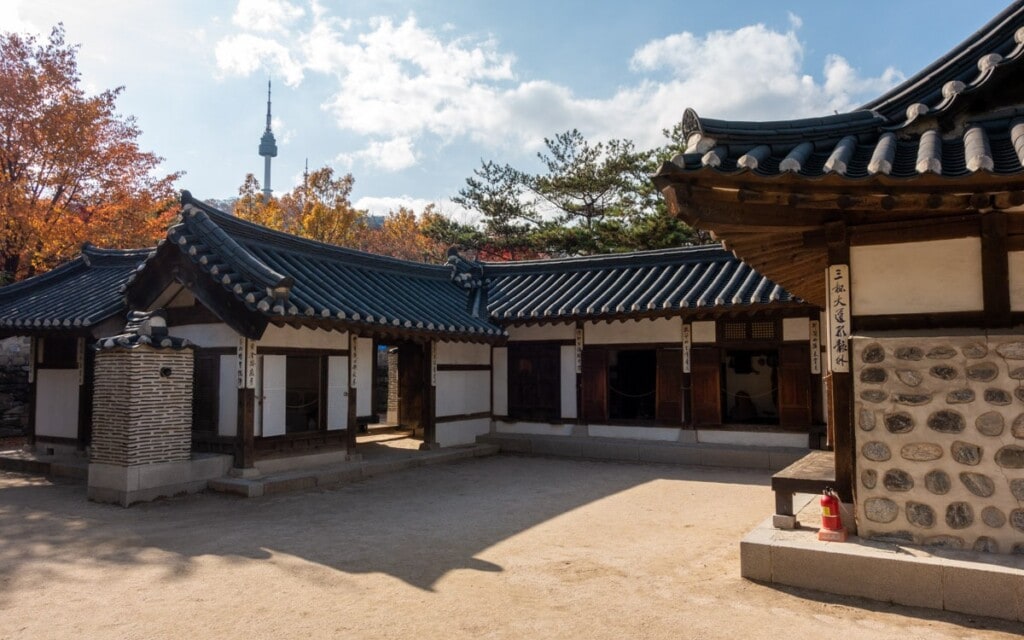
Namsangol Hanok Village is a traditional Korean village that features Korean houses and pavilions, a beautiful small pond, and an interesting time capsule. This area is one of the most beautiful and scenic locations in all of Seoul. A summer resort known as Jeonghakdong was once located here. The resort was also known as Cheonghak-dong for the blue cranes (cheonghak) that were said to have flown in the area.
Last Updated on Mar 13, 2025
